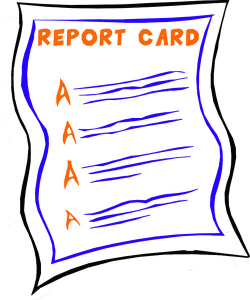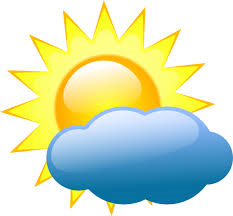Posted by kavery508 | Posted in Uncategorized | Posted on December 11, 2017
 Report cards will be coming home next week. A few notes about grading: Gone are the days of letter grades, and the system now works a little differently. A “3” is Achieving the standard, and that is similar to an “A” grade. A “2” means students are making continuous progress and can do it some of the time, or with help. A “4” is rare: it means students are working a grade level above grade 2 benchmarks. A “1” is even rarer: should any student have been heading there, we would have communicated it well before now (and no one is)!
Report cards will be coming home next week. A few notes about grading: Gone are the days of letter grades, and the system now works a little differently. A “3” is Achieving the standard, and that is similar to an “A” grade. A “2” means students are making continuous progress and can do it some of the time, or with help. A “4” is rare: it means students are working a grade level above grade 2 benchmarks. A “1” is even rarer: should any student have been heading there, we would have communicated it well before now (and no one is)!
To be achieving on this term’s report card, students should be reading on level 20K, and reading fluently while comprehending text on whatever level they may be at. In writing they should be able to write complete sentences; to show evidence of writing opinion and informative pieces; to tell a story about one event from their lives with a beginning, middle, and end in a clear manner; and to write with spaces, correct upper/lowercase letters, correct punctuation, and mostly correct spelling. In math, they should have passed math facts level 10; they should be able to make sense of and solve problems in daily work and on tests; and they should be able to accurately add and subtract 3-digit numbers with regrouping.
 Chapter 6 of MIF focuses on learning multiplication facts of 2s, 5s, and 10s by teaching the connection between skip-counting and multiplication, and using that understanding to solve problems. To solve 8 x 2, for example, we want students to count by 2 eight times. It is a way of learning the meaning behind the numbers involved in multiplication instead of just memorizing facts (which has value, too, just not on its own). One way we teach this is to have students count pairs of objects. Next is counting on fingers while counting aloud by 2 (1 finger up gives you 2, or 1 x 2; etc.). Students will then be introduced to dot paper, which for this chapter shows arrays of 2s, 5s, or 10s. The example below shows 4 x 2. On homework, students should use dot paper by counting down the rows by 2s, then naming how many rows they counted. In this example, they should say “2, 4, 6, 8; I counted 4 times; 4 times 2 is 8.”
Chapter 6 of MIF focuses on learning multiplication facts of 2s, 5s, and 10s by teaching the connection between skip-counting and multiplication, and using that understanding to solve problems. To solve 8 x 2, for example, we want students to count by 2 eight times. It is a way of learning the meaning behind the numbers involved in multiplication instead of just memorizing facts (which has value, too, just not on its own). One way we teach this is to have students count pairs of objects. Next is counting on fingers while counting aloud by 2 (1 finger up gives you 2, or 1 x 2; etc.). Students will then be introduced to dot paper, which for this chapter shows arrays of 2s, 5s, or 10s. The example below shows 4 x 2. On homework, students should use dot paper by counting down the rows by 2s, then naming how many rows they counted. In this example, they should say “2, 4, 6, 8; I counted 4 times; 4 times 2 is 8.”
 See the homework resource folder for examples of each kind of dot paper that can be used at homework time!
See the homework resource folder for examples of each kind of dot paper that can be used at homework time!
 In Social Studies, students are learning the big ideas about maps, namely: maps show places; and maps use pictures, a compass rose, orientation, scale, labels, and symbols. We built a 3-d model of our classroom to investigate orientation, scale, and a sense of space. Then we moved to the representational stage and creating maps of our playground and blacktop using photographs and symbols. There are lots of online learning games to help teach and practice these skills, like this one at National Geographic. In addition, we use Google Earth (requires download) all the time to match places relevant in our learning to our actual geographic location. I highly recommend it!
In Social Studies, students are learning the big ideas about maps, namely: maps show places; and maps use pictures, a compass rose, orientation, scale, labels, and symbols. We built a 3-d model of our classroom to investigate orientation, scale, and a sense of space. Then we moved to the representational stage and creating maps of our playground and blacktop using photographs and symbols. There are lots of online learning games to help teach and practice these skills, like this one at National Geographic. In addition, we use Google Earth (requires download) all the time to match places relevant in our learning to our actual geographic location. I highly recommend it!
 Our science focus this term is on research design! In lots of hands-on lessons, students will learn to: ask questions and make claims; design investigations to test them; collect and analyze data; and draw conclusions. As a central theme, we will focus on earth science, specifically weather. This week, students will engage in observations and investigations designed to get them thinking and wondering about air and water. Here’s a link to the FOSSweather unit page, used by teachers in the district: http://lhsfoss.org/scope/folio/html/AirandWeather/1.html. And a quick web search will present you with lots of kid-friendly sites such as these, which we will use in class:
Our science focus this term is on research design! In lots of hands-on lessons, students will learn to: ask questions and make claims; design investigations to test them; collect and analyze data; and draw conclusions. As a central theme, we will focus on earth science, specifically weather. This week, students will engage in observations and investigations designed to get them thinking and wondering about air and water. Here’s a link to the FOSSweather unit page, used by teachers in the district: http://lhsfoss.org/scope/folio/html/AirandWeather/1.html. And a quick web search will present you with lots of kid-friendly sites such as these, which we will use in class:

